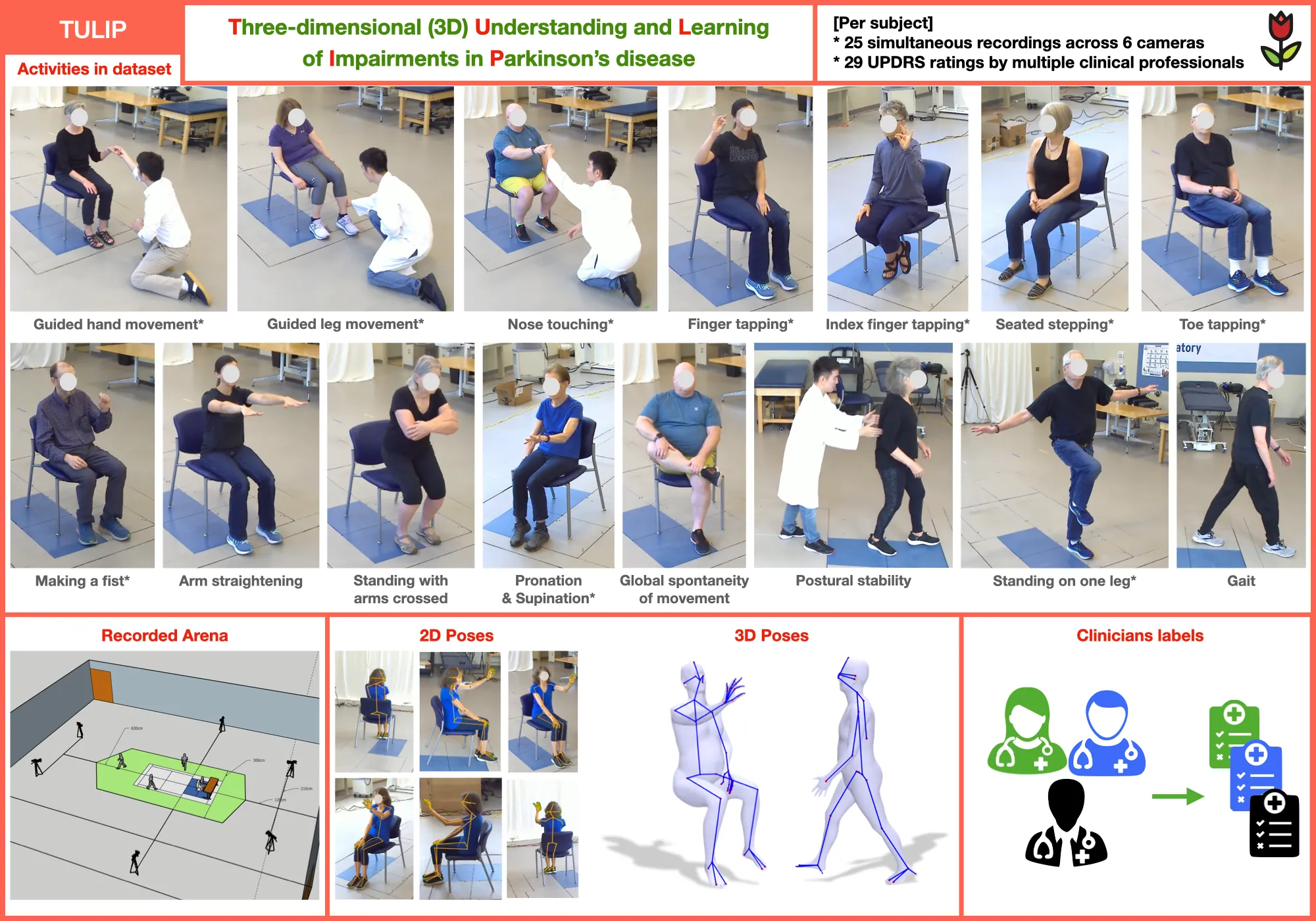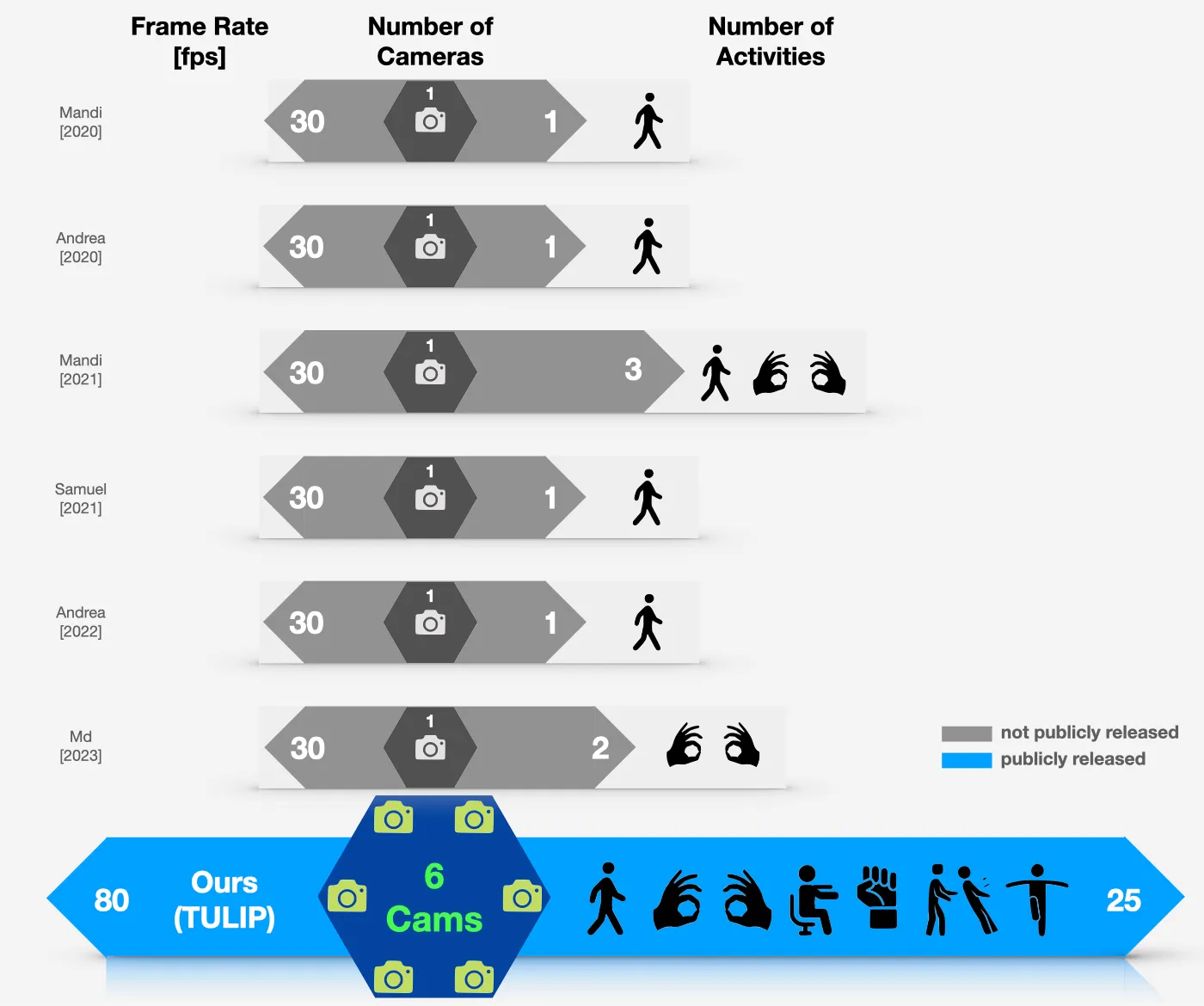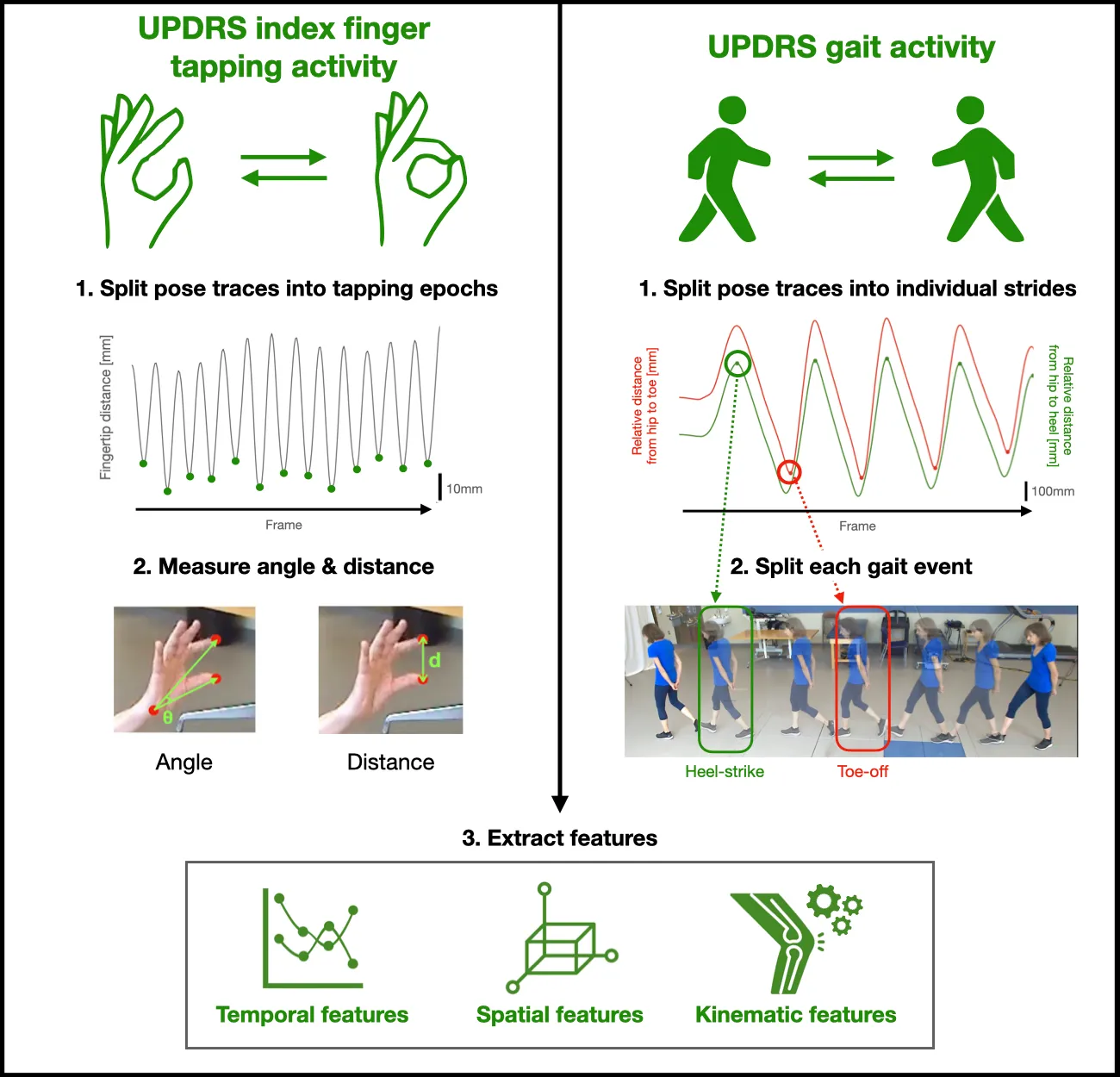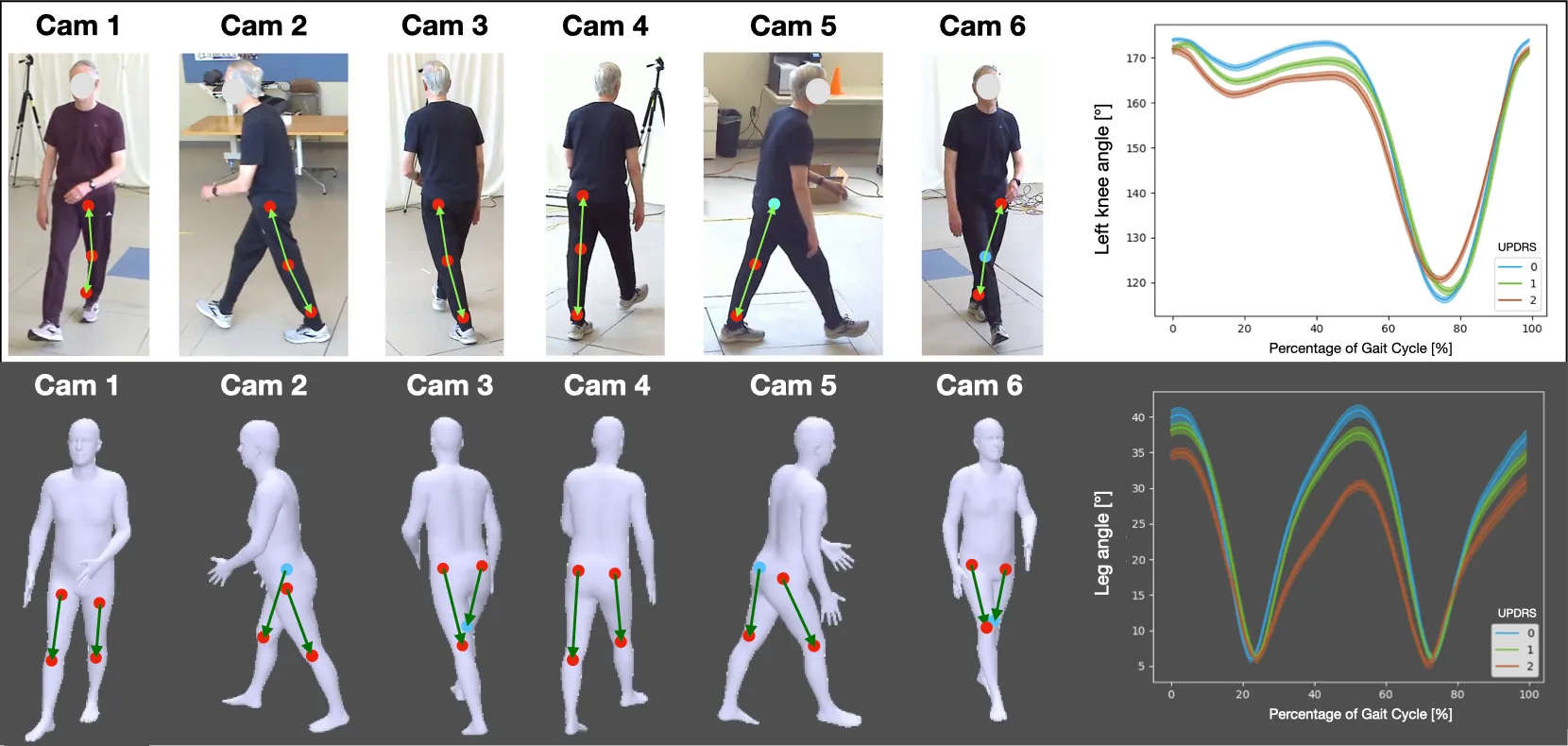 TULIP: Multi-camera 3D Precision Assessment of Parkinson's Disease
TULIP: Multi-camera 3D Precision Assessment of Parkinson's Disease  TULIP: Multi-camera 3D Precision Assessment of Parkinson's Disease
TULIP: Multi-camera 3D Precision Assessment of Parkinson's Disease

Abstract
Parkinson's disease (PD) is a devastating movement disorder accelerating in prevalence globally, but the lack of precision symptom measurement has made it difficult to develop effective new therapies. The Unified Parkinson’s Disease Rating Scale (UPDRS) is the gold-standard label for assessing motor symptom severity, yet its scoring criteria are vague and subjective, resulting in coarse and noisy clinical assessments. While machine learning approaches could help to modernize PD symptom assessments by making them more quantitative, objective, and scalable, model development is hindered by the absence of publicly available video datasets for PD motor exams. Here, we introduce the TULIP dataset to bridge this gap. TULIP emphasizes precision and comprehensiveness, comprising multi-view video recordings (6 cameras) of all 25 UPDRS motor exam components, together with ratings by 3 clinical experts, in a cohort of Parkinson's patients and healthy controls. The multi-view recordings enable 3D reconstructions of body movement that better capture disease signatures than more conventional 2D methods. Using the dataset, we establish a baseline model for predicting UPDRS scores from 3D pose sequences, illustrating how existing diagnostics could be automated. Going forward, TULIP can be used to develop new precision diagnostics that transcend UPDRS scores to provide a deeper understanding of PD and its potential treatments.

Motivation
Parkinson's disease (PD) is a progressive neurological condition affecting movement, with its prevalence doubling in the past 25 years to over 8.5 million worldwide. Despite extensive research, a definitive cure remains elusive, prompting a focus on managing symptoms to enhance patient well-being. The Unified Parkinson's Disease Rating Scale (UPDRS), endorsed by the Movement Disorder Society, is a key tool for evaluating PD clinically. However, criticism arises due to its reliance on subjective clinician assessments, potentially leading to inconsistent and inaccurate diagnoses. This subjectivity, along with the scale's complexity, introduces variability and hinders the detection of subtle motor impairments. Multiple studies have highlighted significant variability in scoring among clinicians, emphasizing the necessity for a more objective and reliable assessment approach.
TULIP
Here, we introduce the TULIP (Three-dimensional (3D) Understanding and Learning of Impairments in Parkinson's disease) to address this unmet need. To our knowledge, TULIP dataset is the world's first video dataset of PD motor exams to: 1) be publicly available, 2) include all of the body movement tests of UPDRS (TULIP excludes the speech test), 3) enable markerless 3D kinematic analysis via multiple cameras. TULIP also significantly increases the acquisition frame rate compared to previous studies. We selected the name TULIP as a reference to the floral symbol associated with PD research and advocacy, reflecting our intention for this dataset to catalyze innovative machine learning approaches for understanding and treating PD.


Experimental Results
We utilized TULIP to assess models predicting UPDRS scores for gait and fingertapping, common subjects of study in Parkinson's disease research, directly from video recordings. To establish baselines, we opted for temporal, spatial, and kinematic feature extraction methods to align with previous work and enable more direct comparisons between our 3D approach and existing 2D methods. Our analysis revealed that Parkinson's disease patients exhibited limited range of motion, as observed by assessing joint angles, confirming observations from previous clinical investigations.

[Feature extraction from gait motion] Top: Left knee angles with real images. Bottom: Leg angles with 3D mesh models. Traces show clear differences associated with increasing impairment (higher UPDRS score means more impaired). Points marked as skyblue are occluded in specific viewpoint. Blurred areas in feature graphs indicate 95% confidence intervals.
Citation
@InProceedings{Kim_2024_CVPR,
author = {Kim, Kyungdo and Lyu, Sihan and Mantri, Sneha and Dunn, Timothy W.},
title = {TULIP: Multi-camera 3D Precision Assessment of Parkinson's Disease},
booktitle = {Proceedings of the IEEE/CVF Conference on Computer Vision and Pattern Recognition (CVPR)},
month = {June},
year = {2024},
pages = {22551-22562}
}

